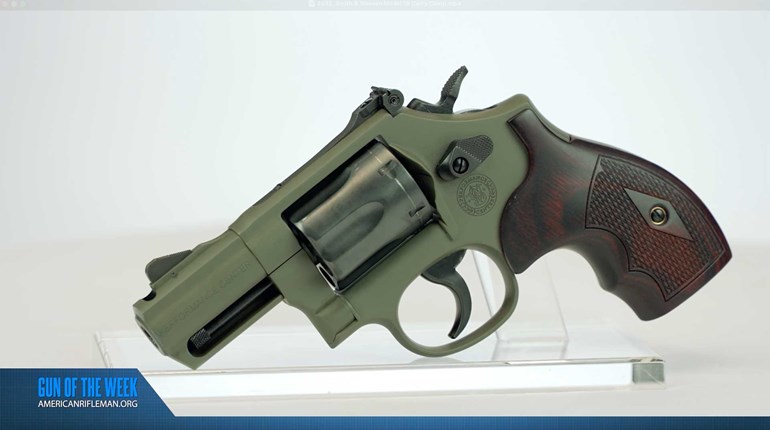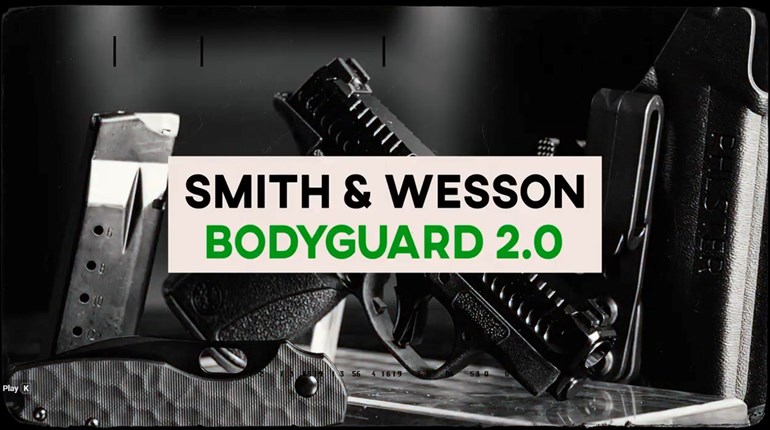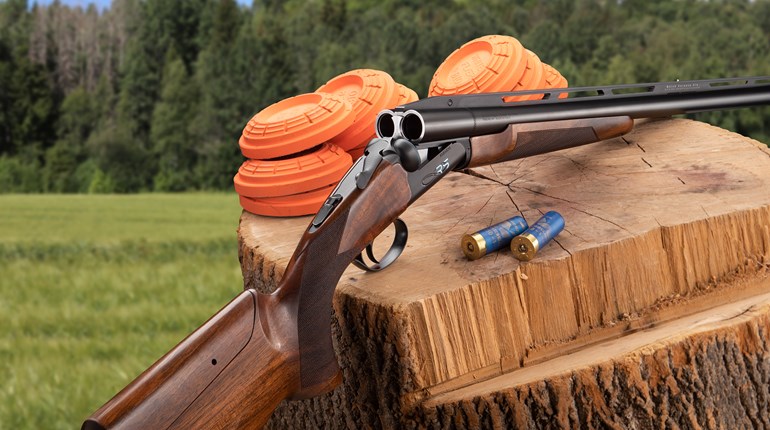
“1 Adam-12, Handle Code 3”
As a young child growing up in the late 1960s and early ’70s, hearing those words blast over the TV on a Saturday evening meant that the next 30 minutes were going to be thrilling. Watching “Adam-12” on NBC was something I really looked forward to and I was enthralled with how officers Malloy and Reed handled street crime in Los Angeles. It gave me an early respect for police officers, especially the firearms they carried.
It wasn’t until much later that I appreciated that their revolvers were Smith & Wesson Model 14s chambered in .38 Spl. Built on the company’s famous K-Frame, the Model 14 was basically a Military & Police (M&P) with adjustable target sights. Introduced in 1899, the Smith & Wesson M&P, catalogued as the Model 10 since 1957, is perhaps the most prolific revolver of the 20th century, with more than 6 million manufactured.
Aptly named the Military & Police model, it was designed to take the new .38 Spl. cartridge developed by Smith & Wesson to replace the .38 Colt. The Colt cartridge was receiving bad reviews while in use with the Army trying to put down the Philippine Insurrection following the Spanish-American War of 1898.
The old .38 Colt was a blackpowder round that had trouble penetrating the shields of the Moro rebels and was found to have insufficient “knock-down” power. Smith & Wesson’s new Military & Police revolver in .38 Spl., with a .357-inch-diameter bullet, performed with stellar results and was quickly adopted by the U.S. Military and stayed in service through the Vietnam War.
As things go, what works for the military will also work for law enforcement, and at the turn of the century, as metropolitan police forces were growing exponentially, the new M&P revolver found instant favor with patrolmen who needed more than a nightstick to subdue bad guys. It soon became the standard arm of most law enforcement officers in this country.
As the popularity of the M&P grew, the NRA, simultaneously, began an association with law enforcement organizations that continues more than a century later. In 1916, Frank J. Kahrs, writing for Arms and the Man magazine, the predecessor to the NRA’s American Rifleman, stated that extensive training was necessary in teaching officers to shoot. Kahrs’ article proposed “that a systematic program of instruction be made part of the original training of every policeman. Regular practice at standard paper targets should be held at least once a month.”
To quote the NRA website: “In 1960 the NRA Law Enforcement Division was formed to provide the law enforcement community with a means of certifying firearm instructors. The NRA Law Enforcement Division offers a complete police shooting program to police departments and law enforcement agencies to encourage patrol officers to gain more experience, training and time on the range using their duty firearms. To further encourage law-enforcement officers to gain more experience, training and time on the range using their duty firearms, the NRA created the Police Pistol Combat (PPC) competitions, Tactical Police competitions and the National Police Shooting Championships in 1962.”

Shortly before World War II began in 1939, Smith & Wesson found itself in dire straits financially. A contract from the British Purchasing Commission for a light machine gun resulted in an influx of $1 million into its coffers at an incredibly important time. However, when the Smith & Wesson Light Machine gun proved unacceptable to the British, the company was on the brink of financial ruin.
Faced with having to pay back the advanced money, a compromise was reached whereby Smith & Wesson provided the British with tens of thousands of M&P revolvers chambered in .38/200, with a phosphate military finish and wood grips. When the U.S. entered the war in 1941, Smith & Wesson chambered the gun in .38 Spl. and supplied the government with thousands of them; renaming them the Victory Model, with serial numbers starting with “V.”
The M&P was purchased and used by military and police units of more than 30 countries. It remained popular with police officers well into the 1980s, when double-stack, semi-automatic handguns rapidly replaced revolvers in the law enforcement community. The revolver is still produced by Smith & Wesson as part of its Classics line. Models are still in use in France, Peru and a handful of other countries.
Every gun has a story. The story of the Smith & Wesson M&P revolver is as colorful as any ever manufactured. From arming law-enforcement officers for more than 80 years and seeing service on the front lines in World War II, this gun helped save its manufacturer from ruin, paving the way for it to become the most produced revolver of the 20th century.
MG Julian S. Hatcher was Chief of Ordnance for the Army and Technical Editor of American Rifleman. He donated his Smith & Wesson Victory Model, serial number 3 (seen here), to the National Firearms Museum.





































